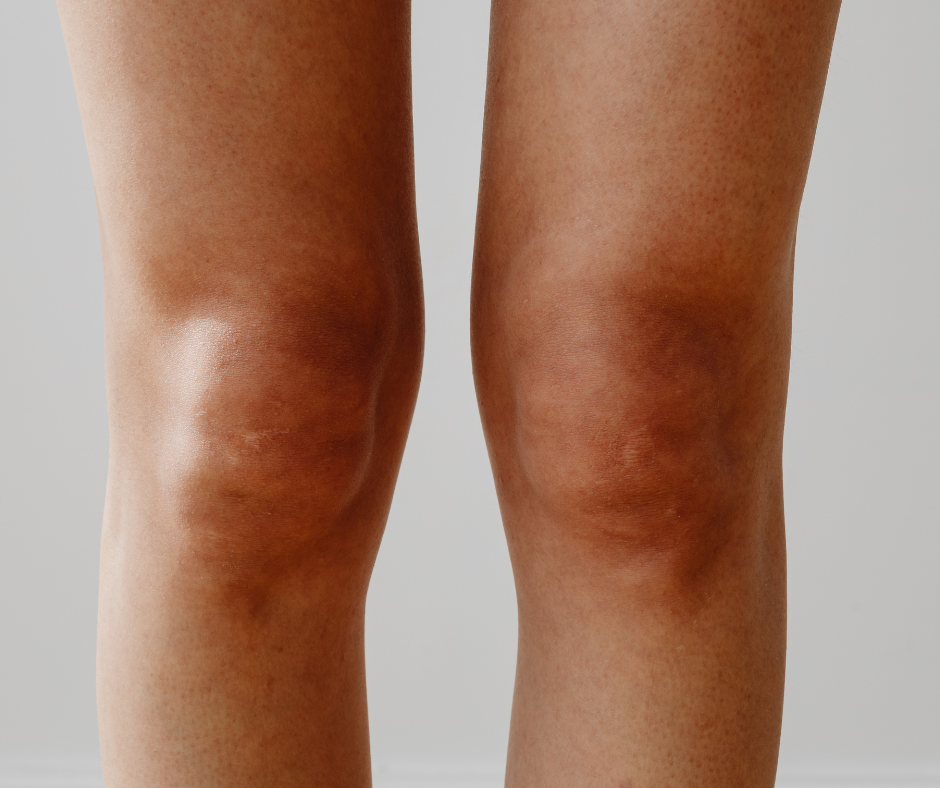
Many people struggle with uneven skin tone around the joints and often wonder, how to get rid of hyperpigmentation on knees? This condition is common and usually harmless, but it can make the skin appear darker, rougher, or patchy. Hyperpigmentation on the knees occurs when melanin, the pigment that gives skin its colour, builds up due to friction, sun exposure, or inflammation. Thankfully, treatments such as PicoStar laser therapy can help restore even tone and smoother texture effectively.
The skin on the knees is thicker and more prone to dryness and friction than other areas. Constant rubbing, kneeling, or pressure can lead to a buildup of dead skin cells and excess pigment. Hormonal changes, past injuries, or inflammatory conditions such as eczema can also trigger post-inflammatory hyperpigmentation. Although exfoliating and moisturising can help, deeper pigmentation often requires advanced treatment to target melanin at its source.
PicoStar is a state-of-the-art picosecond laser that delivers ultra-short bursts of light energy to break down excess melanin without damaging surrounding tissue. Its dual wavelengths allow it to treat different pigment depths and skin tones safely. The laser energy shatters pigment particles into tiny fragments that the body gradually clears away, revealing brighter and more even skin.
Unlike older laser systems, PicoStar’s high precision and fast pulse duration minimise heat, reducing the risk of irritation or post-treatment redness. It’s a non-invasive solution that works for stubborn pigmentation where topical creams may fall short.
While PicoStar laser sessions provide powerful results after pigmentation treatment, combining them with medical-grade exfoliants or brightening skincare can enhance and maintain outcomes. Ingredients such as niacinamide or vitamin C support skin renewal and help prevent pigment recurrence. Sun protection is also crucial, as UV exposure can darken treated areas or trigger new pigmentation.
The most effective way to reduce dark pigmentation on the knees is through targeted laser treatment with PicoStar, supported by consistent skincare and sun protection. PicoStar’s advanced technology tackles melanin deep within the skin, helping to restore an even tone and smoother texture with minimal downtime. Over a few sessions, the skin appears visibly lighter, clearer, and more radiant, a confident step toward balance and brightness.
To effectively reduce hyperpigmentation on the knees, it’s important to target both surface and deeper pigment. While exfoliation and brightening creams can help fade mild discolouration, advanced treatments such as PicoStar laser therapy deliver the most noticeable results. PicoStar uses ultra-short bursts of light to break down excess melanin, helping to even out skin tone and restore smoother texture. Consistent moisturising and daily sun protection also help prevent pigmentation from returning.
Dark pigmentation on the knees is often caused by friction, pressure, or repeated movement, which stimulate melanin production in the skin. Other contributing factors include sun exposure, hormonal changes, or inflammation from conditions like eczema or psoriasis. Because the skin on the knees is thicker and more prone to dryness, dead cells can accumulate and make the area appear darker. Treatments like PicoStar laser can safely break down this excess pigment, improving tone and clarity.
Yes, dark knees are completely reversible in most cases. With the right combination of laser treatment, gentle exfoliation, and brightening skincare, pigmentation can fade significantly or disappear altogether. PicoStar laser is particularly effective for stubborn cases, as it targets melanin deep below the surface while stimulating natural skin renewal. Maintaining hydration and protecting the area from friction and UV exposure are essential for lasting, even-toned results.